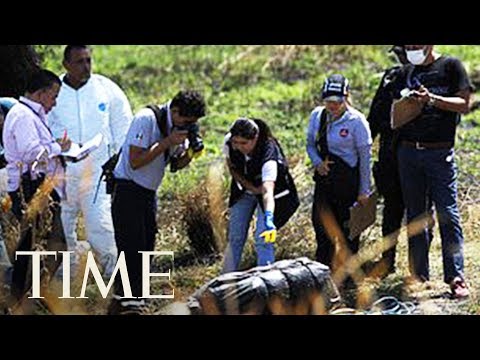
SANTA CRUZ, AZ – Despite rigorous standards for transporting body parts used for medical research, authorities in Arizona discovered two sites where human remains, those believed to have been dedicated for medical research, were dumped. The discovery was described as “bizarre” and “grisly” but may not be entirely uncommon.
Within the last two weeks, AzCentral provided a background story of the man accused of dumping the remains. The body parts were said to be linked to a company called Future GenX owned by Walter Mitchell which had closed in 2020, and was described as a “business which involved the management of cadavers for research”. Future GenX was headquartered out of Seattle, Washington. Mitchell transported the remains of at least five people to Arizona illegally in 2020. On January 7, it was reported that Mitchell, a native of Scottsdale, AZ, was a “veteran body broker”.
Mitchell was charged with 29 counts of abandonment or concealment of a dead body. Reports from a local Fox News outlet cited the case of Mitchell and Future GenX as the second of a bizarre trend in body trafficking crimes in the state in recent years, with another investigation in 2019 tracing the human body sales industry further. The report detailed the discovery of a “shuttered Phoenix body donation business” which was responsible for the sewing of heads onto mismatched bodies, and the storage of human remains in gallon buckets, including a “cooler filled with male genitalia.”
Despite these crimes, Arizona continues to be a “regulatory-free” state for the donation of human bodies for medical research.
Bizarre Mutilations And The Link To Corpse Trading
A series of bizarre unsolved murder cases in recent history exposed the jarring industry of organ sales in the United States. In 2014, a Jane Doe’s severed head was discovered in Pennsylvania. The woman’s head had been embalmed, with the eyes replaced with red rubber balls, stated Reuters Investigates. It was determined that the head belonged to a white female approximately age 50.

The case had been followed up on in the years since it transpired. The St. Louis Post Dispatch interviewed coroners and caseworkers linked to the case in 2017. They agreed that the work appeared to be that of a ring of organ traffickers, based on the forensic examination of the cuts used in removing the head.
The sale of organs is illegal in the United States under the National Organ Transplant Act of 1984. Even though it is illegal, the United States had done “very little” (as of 2014) to halt the growing presence of organ sales crimes, stated the University of Utah. There is no apparent improvement to this statistic currently.
Over the years since Jane Doe’s head was discovered on a lonely stretch of road in rural Pennsylvania and drew more attention to such crimes, research reveals the complexity of the industry. The body trade is a complex process of providing options for handling the dead for cash-strapped relatives, securing willing donors, and leaving no points to trace.
Acts Of Forensic Countermeasure, Or Networking?
Because the trade of body parts is so poorly regulated and little understood, the actual network of the body trade goes relatively untraced. It draws greater scrutiny, however, to recent acts of murder in which mutilated corpse crime scenes were destroyed after the fact. One example of this came from Norway, South Carolina.
The New York Daily News reported on January 5 that a group of adventurers had gone seeking after a “haunted house” in South Carolina. When they entered the property, a teenager opened the door to a freezer after noticing the smell of “rotten meat” and found a badly decomposed human body, gender undefined, that was dressed in 34 PacSun blue denim stacked skinny jeans, a short-sleeve T-shirt, and a brown belt. The property burned down shortly after this discovery under circumstances that the local authorities found “suspicious.” Authorities questioned and cleared the former owner of the property. Later, the police identified a tattoo on the human remains that was considered a possible link in determining the identity of the remains. The photo provided by local authorities showed a tattoo of a human likeness, with what appeared to be the sun above it.
Another example of the mutilation of a corpse under suspicious circumstances is that of the Grayfox slaying in Port Huron, Michigan.
Reginald Cu-Nu Grasty was arrested for the slaying of 44-year-old William Michael Turnlow in the vicinity of Jefferson Avenue and Conner Street on January 19, according to ABC News. Grasty was accused of murder and dismembering Turnlow, storing his remains aboard the former U.S. Navy cadet training ship Grayfox. The Port Huron Times Herald reported on February 11 that Grasty appeared before the St. Clair County District Court via Zoom for a probable cause hearing. It was agreed that an examination hearing for Grasty would then be held on February 18. Turnlow’s body was discovered on June 23, 2020.

Grasty and Turnlow both lived aboard the Grayfox in October 2019 as part of a program provided by the Grayfox Association, to help those who had fallen on hard times learn job skills. Orlow had been asked to leave the vessel for violating the ship’s no alcohol policy. It has not been publicly determined what exactly the motive was for Turnlow’s murder.
As the details of the Turnlow homicide emerge, and the case commences, it calls to mind the significance of dismemberment crimes in recent events. What appears to the untrained eye as random acts of cruelty, has a possible link to a far more complex criminal enterprise. The dealing of body parts taken from the deceased, or extracted from living humans.
Dealing In The Dead
Reuters investigated the body trade over the years since Jane Doe’s discovery and connected a series of criminal corpse abuses. In 2016, Arthur Rathburn, a former researcher at the University of Michigan, was arrested as a broker of human corpses. The United States government hailed this as a milestone achievement, yet Reuters exposed that the government had tolerated warning signs from Rathburn for years before he was finally brought down.
A Possible Link To Cartels?
The Associated Press reported on February 18 that prosecutors in Mexico’s western state of Jalisco discovered 18 bags containing hacked up human body parts on the outskirts of Guadalajara. The region is the location of the Jalisco New Generation Cartel, known as one of Mexico’s most dangerous and powerful gangs. With more than 80,000 people listed as missing from the Mexican drug war that has extended from 2006 to the present, there is a mass number of missing people to convert into illegal body trafficking “products.”
Likewise, bodies have been turning up from secret graves in recent years as the feuding cartels wage war in Jalisco. The proximity of the Mexican border to the state of Arizona raises questions of a prospective connection between the cartel’s feud and the trade of human organs.







Comments are closed.